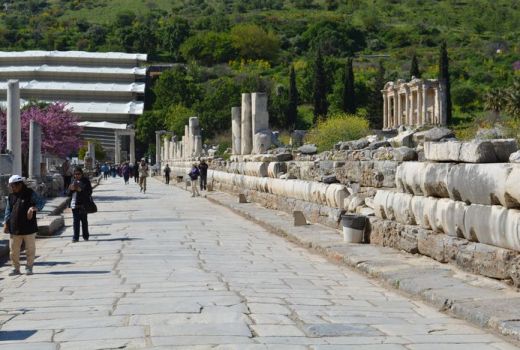The frescoes found in the Thracian Tomb depict various scenes from the life of the buried nobleman. Initially interpreted as a funeral feast, the central scene is now believed to represent a wedding procession. The focal point features a Thracian couple of noble lineage, accompanied by a towering figure, likely a goddess, standing beside the man. Other participants, including pipers, cup-bearers, gift-bearing women, and horse-led warriors, flank the central figures, illustrating the richness of Thracian ceremonial life.
Extraordinary Thracian Temples
The Shushmanets Mound Temple: This temple, unparalleled in the Balkans, boasts columns both in its foyer and chamber. Reflecting Thracian cosmology, it symbolizes the underworld and celestial realms, united by a grand column terminating in a sun emblem Istanbul Cultural Tours.
The Ostrusha Mound Temple
Dating back to the 4th century BC, this temple comprises six rooms, with a ritualistic horse sacrifice recorded in the southwestern chamber. Noteworthy is the single granite-block central chamber and a preserved image of a female face on the ceiling.
The Griffons Mound Temple
Named for its griffon-headed entry, this temple showcases dome-shaped architecture crafted with remarkable skill. Griffons, mythical creatures with lion and eagle attributes, adorn the entry, distinguishing it from other Thracian monuments.
The Helvetsia Mound Temple
Built in the 4th century BC, this sanctuary was later repurposed for burial. The entrance gate’s stone wings, painted red and black symbolizing life and death respectively, remain intact. A horse sacrifice aimed to channel blood into the earth, symbolizing reverence for the Great Mother-Goddess.
These temples offer profound insights into Thracian beliefs, rituals, and architectural prowess, enriching our understanding of this ancient civilization.









